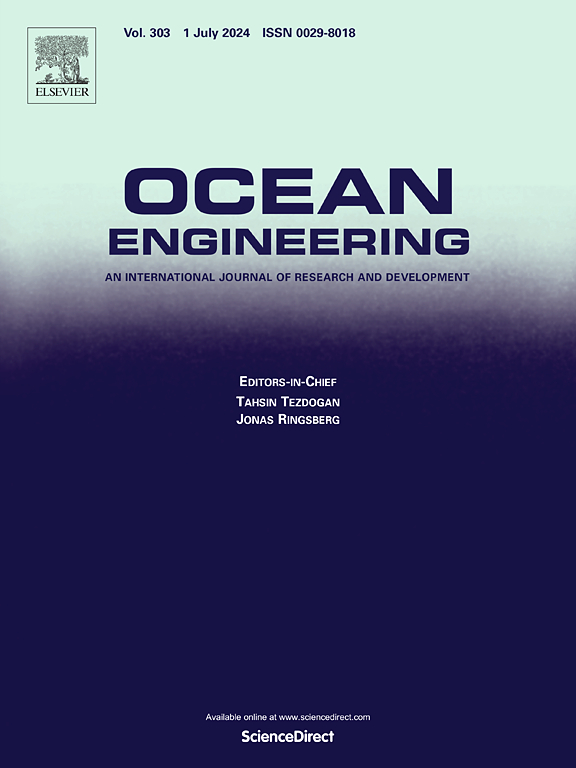A systematic review on mechanism and regulation strategy of marine hydrodynamic noise: Advances, challenges, and perspectives
IF 4.6
2区 工程技术
Q1 ENGINEERING, CIVIL
引用次数: 0
Abstract
Noise pollution in the oceans has emerged as a significant environmental concern, garnering increasing global attention in recent years. It will harm human health and the survival of species and weaken equipment reliability. With advancements in navigation technology and marine resource exploitation, issues of hydrodynamic noise are expected to rise increasingly, which poses a significant challenge to marine noise management. Therefore, there is a necessity to explore new technologies to improve marine acoustic environments. This review first summarizes and analyzes the existence scenarios and generation mechanisms of hydrodynamic noise near or far off the coast. Then, the mitigation principles and applications of passive noise control (PNC), active noise control (ANC), and active-passive hybrid noise control (HNC) techniques for hydrodynamic noise control (Hydro-NC) are discussed, as well as their recent advancements. An overview of physical materials and particular structures used in PNC is followed, which either modulate the noise intensity/source by altering the flow field or directly absorb the sound at the source/transmission path to reduce the total noise levels at a specified frequency band. In addition, ANC is pioneeringly introduced to regulate hydrodynamic noise in the oceans; its mitigation mechanism, latest progress, and future perspectives for Hydro-NC are explored. To guarantee more critical acoustic requirements, it further discusses the coupling strategies of PNC and ANC and proposes some novel conceptual HNC, as well as their potential on Hydro-NC. Finally, challenges and future perspectives of PNC, ANC, and HNC in Hydro-NC are presented.
海洋水动力噪声机理与调控策略综述:进展、挑战与展望
海洋噪音污染已成为一个重要的环境问题,近年来引起了全球越来越多的关注。它将危害人类健康和物种的生存,并削弱设备的可靠性。随着航海技术的进步和海洋资源的开发利用,水动力噪声问题日益突出,这对海洋噪声管理提出了重大挑战。因此,有必要探索改善海洋声环境的新技术。本文首先总结和分析了近海水动力噪声的存在情景和产生机理。然后,讨论了水动力噪声控制(Hydro-NC)中的被动噪声控制(PNC)、主动噪声控制(ANC)和主-被动混合噪声控制(HNC)技术的降噪原理和应用,以及它们的最新进展。然后概述了PNC中使用的物理材料和特殊结构,它们通过改变流场来调制噪声强度/噪声源,或者直接吸收噪声源/传输路径上的声音,以降低指定频段的总噪声水平。此外,ANC率先用于调节海洋中的流体动力噪声;探讨了其缓解机制、最新进展和未来的发展前景。为了保证更关键的声学要求,进一步讨论了PNC和ANC的耦合策略,并提出了一些新的HNC概念,以及它们在Hydro-NC上的潜力。最后,提出了PNC、ANC和HNC在Hydro-NC中的挑战和未来展望。
本文章由计算机程序翻译,如有差异,请以英文原文为准。
求助全文
约1分钟内获得全文
求助全文
来源期刊

Ocean Engineering
工程技术-工程:大洋
CiteScore
7.30
自引率
34.00%
发文量
2379
审稿时长
8.1 months
期刊介绍:
Ocean Engineering provides a medium for the publication of original research and development work in the field of ocean engineering. Ocean Engineering seeks papers in the following topics.
 求助内容:
求助内容: 应助结果提醒方式:
应助结果提醒方式:


